1031 Exchange: Reverse Exchange Overview

Section 1031 of the Internal Revenue Code permits a Taxpayer to defer capital gains tax when an investment property is transferred in exchange for another of “like-kind”. The “Reverse Exchange” is a specialized transaction which occurs when a Taxpayer desires to acquire replacement property (new) prior to selling their relinquished property (old).
IRS APPROVAL OF REVERSE EXCHANGE
Taxpayers have been doing reverse exchanges in various forms since the early 1960’s. Although reverse exchanges are not prohibited by the IRS, the deferred exchange regulations do not apply to these transactions. Reverse exchanges were often accomplished through an “Accommodation Party”, a third-party investor who was required to make an investment in the new property, to avoid being deemed the agent of the Taxpayer. Without guidance from the IRS, Taxpayers and Qualified Intermediaries historically relied on judicial decisions to structure these transactions.
On September 15, 2000, the IRS officially embraced reverse exchanges with the issuance of Revenue Procedure 2000-37 (Rev. Proc. 2000-37). Since a Taxpayer is prohibited from owning both the new and old properties at the same time, this Revenue Procedure creates a framework for a “safe harbor” reverse exchange. If a Taxpayer follows the guidelines of Rev. Proc. 2000-37, the IRS has indicated that it will not challenge the form of the exchange. A reverse exchange may be done outside the safe harbor, but the Taxpayer loses the benefit of the favorable presumptions contained in Rev. Proc. 2000-37.
REV. PROC. 2000-37 – A PARKING TRANSACTION
Rev. Proc. 2000-37 provides that a separate entity must be formed, called an Exchange Accommodation Titleholder (EAT), to take title to either the relinquished property or the replacement property and to ‘park the title’ for up to 180 days (the “Exchange Period”). By arranging for an EAT to park one of the properties, the Taxpayer has technically complied with the general rule of ‘relinquish first, replace later’ while satisfying a market-driven need to close on the replacement property. The EAT is disregarded as an entity separate from its owner for federal income tax purposes.
The Rev. Proc. requires that the EAT and the Taxpayer enter into a written agreement, called a Qualified Exchange Accommodation Arrangement (QEAA), setting forth the terms by which the EAT will take and hold title. In addition to adopting the time limitations that govern the deferred exchange, Rev. Proc. 2000-37 also requires that the Taxpayer make a written identification of the intended relinquished property within 45 days after a property is parked with the EAT.
The QEAA must provide that:
- The EAT is holding the property for the benefit of the Taxpayer in facilitating an exchange under Section 1031 and Rev. Proc. 2000-37;
- The EAT will be the beneficial owner of the real estate for all federal income tax purposes; and
- The EAT will report the acquisition, holding and transfer of the property on its federal income tax return.
EXCHANGE FIRST – OR LAST
In an ‘exchange last’ transaction, the replacement property is parked with the EAT, who assigns into the contract to purchase and takes title to it. The acquisition is often funded by a loan arranged by the Taxpayer. The Taxpayer must close on the relinquished property within the exchange period, calculated from the day following the closing of the replacement property. When the relinquished property is sold, the EAT completes the exchange by directly deeding the replacement property to the Taxpayer. The ‘exchange last’ transaction provides the Taxpayer with flexibility in cases where the Taxpayer is either uncertain which of their properties will serve as the relinquished property when they own more than one or when the Taxpayer is concerned about closing the relinquished property because of issues with the buyer. After the relinquished property has been transferred to the buyer, the replacement property and any net sales proceeds from the relinquished property are transferred to the Taxpayer to complete the ‘exchange last reverse exchange’.
A transaction where the relinquished property is parked with the EAT is referred to as an ‘exchange first’ transaction. The EAT usually takes title to the relinquished property immediately prior to the Taxpayer’s acquisition of the replacement property. While the forward exchange is over quickly, the parking transaction may continue for the entire exchange period as the Taxpayer locates a third-party buyer for the relinquished property. Many lenders prefer this transaction because it allows title to the replacement property to vest in the Taxpayer, the real party in interest and the borrower under the loan agreement. Once a third-party buyer is found for the relinquished property, the EAT transfers title to it to the buyer and applies any net sales proceeds to retire any debt, or portion thereof, incurred by the EAT on its acquisition of the replacement property. Occasionally, a Qualified Intermediary may require an ‘exchange first’ transaction because of identified environmental issues with the replacement property. Because Rev. Proc. 2000-37 does not require the Taxpayer to use one or the other approach in order to achieve a nontaxable reverse exchange, the ‘exchange first’ concept provides added flexibility to the process.
IMPROVEMENT EXCHANGES
Sometimes a Taxpayer will want to make improvements to a replacement property using tax-deferred funds. IRS regulations require that such improvements must be made before the Taxpayer takes title. The solution is to have an EAT acquire the property, make the improvements, then transfer the property to the Taxpayer to complete the reverse exchange.
Caution must be taken if the Taxpayer tries to make improvements to land the Taxpayer already owns. Rev. Proc. 2004-51 limits the application of Rev. Proc. 2000-37 in these situations. Rev. Proc. 2000-37 does not apply to replacement property held in a QEAA if the property is owned by the Taxpayer within the 180-day period ending on the date of transfer of title to the property to an EAT.
WHY DO A REVERSE EXCHANGE?
The reverse scenario may arise as a result of a Taxpayer’s decision to acquire new property prior to selling the old property. Many practical realities and competitive reasons are often at play, requiring the Taxpayer to take advantage of a purchase of new property prior to sale of the old. For instance, the Taxpayer may wish to prevent loss of earnest money or a favorable financing commitment. Still others do not wish to deal with the pressure of the 45-day identification period in the deferred exchange. The reverse exchange allows the Taxpayer to avoid the 45-day deadline by closing on replacement property first and then enjoying 180 days within which to sell the relinquished property. Other Taxpayers may be forced into a reverse exchange because the relinquished property may fail to close in advance of the purchase of the replacement property, such as when the buyer has trouble qualifying for financing or even gets ‘cold feet’ prior to closing. If the replacement property closing is pending, and non-refundable earnest money might be at risk, the transaction must be converted to a reverse exchange.
BEST PRACTICES TIP
The general consensus among tax lawyers and advisors seems to be that the “safe harbor” of Rev. Proc. 2000-37 is truly safe. If the requirements of the Rev. Proc. are satisfied, the IRS will not challenge the EAT as the actual owner of the property. Thus, the best practice is to take advantage of the favorable presumptions available to Taxpayers in Rev. Proc. 2000-37, even though the Rev. Proc. clearly contemplates the availability of a reverse exchange outside of its requirements. Taxpayers proceeding under the safe harbor of the Rev. Proc. should take care to avoid the circumstance in which they are unable to dispose of the relinquished property within the exchange period and later attempt to “convert” the transaction to a “non-safe harbor” reverse exchange. Most experts agree that a reverse exchange must be either completely within or completely outside the safe harbor. The transaction cannot simply morph from a safe harbor to a non-safe harbor transaction after the expiration of the exchange period.
This article was originally published by Janna Perret of First American Exchange Company at https://www.firstexchange.com/reverse-exchange-overview. To learn more about 1031 Exchanges you may contact Janna Perret, the Central Region Manager at First American Exchange Company, by phone at 504-539-5933 or view her PROFILE.
Information provided with permission from First American Exchange Company. All rights reserved. First American Exchange Company makes no express or implied warranty respecting the information presented and assumes no responsibility for errors or omissions.

